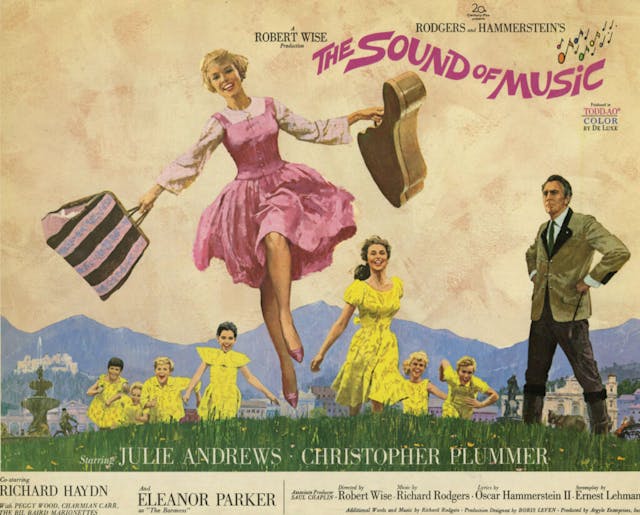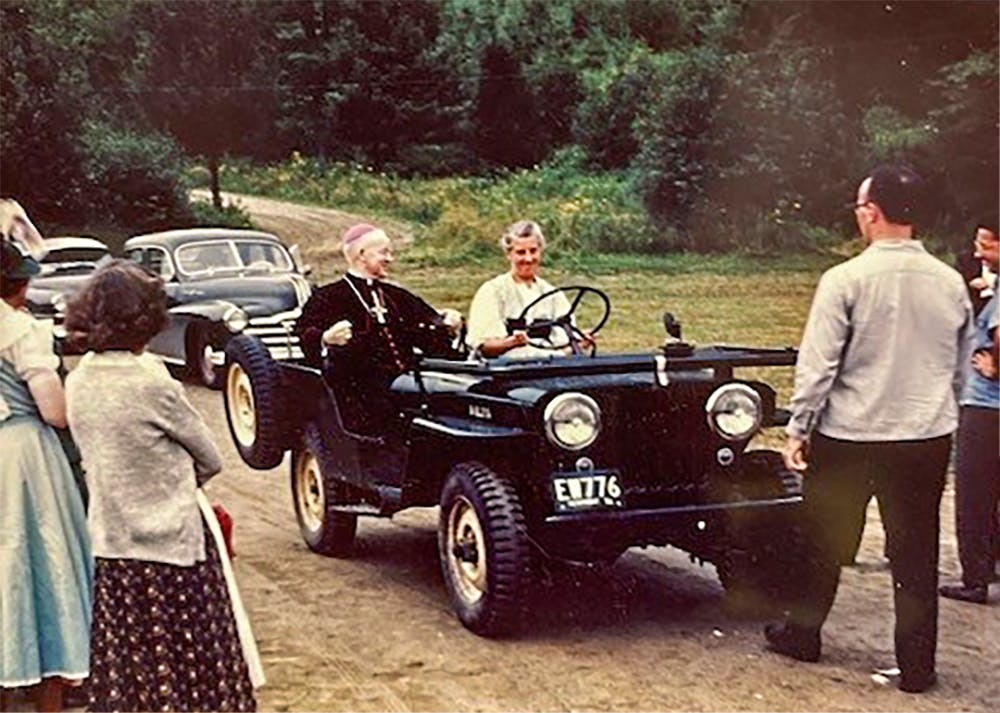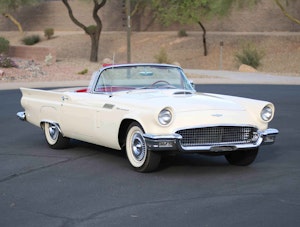Media | Articles
In Vermont, the Hills Were Alive with the Sound of Mercedes
Thanks to The Sound of Music, you already know the story of the von Trapp family—or at least you think you do. There really was a heroic naval captain named Georg von Trapp, he really did marry a much younger governess named Maria, the children really did sing beautifully, and they really did leave Austria when the Nazis annexed the country. Many of the details in the movie are of course inaccurate (for one thing, there were ten kids, not seven, and it wasn’t Maria who taught them to sing), but as a wholesome classic that the whole family can enjoy, it does at least have a whiff of the truth about it. But there is something about Maria von Trapp that Julie Andrews’ well-scrubbed portrayal didn’t get across.
Maria was a foot-to-the-floor, damn-the-torpedoes, max-revs gearhead.
“She was hell on wheels!” says Peigi Guerra, docent for the von Trapp family archives. Maria was known for zipping around town while wearing a full traditional Austrian dirndl dress, driving right down the middle of the road and forcing the locals to pull over and get out of her way.
If you’re just now trying to picture Julie Andrews as a steely-eyed helmswoman, yodelling while careening into a tight bend, you may be experiencing a little cognitive dissonance. The nuns at the convent may have found the fictional Maria’s behavior a little trying, but their complaints are as petty as they come. Whistling on the stairs? Saints preserve us. The Maria shown in The Sound of Music is as angelic and sweet as an Austrian gugelhupf.

The real Maria von Trapp wasn’t like that because she was a real person and real people come with idiosyncrasies. Most descriptions of her from friends and family call her a force of nature, the drive that led the family first to the stage, and then to America. Her stepchildren loved her, but knew her to have a fierce temper, one that could come and go as quick as a thunderstorm. And she drove the way she lived: flat out.
Marketplace
Buy and sell classics with confidence
Born in 1905 in Vienna as Maria Kutschera, she had an early life that sounds positively Dickensian. She was born on a train, orphaned young, and sent to live with an uncle who at best could be called strict and at worst comes off as one of the villains of the story. Fiercely anti-Catholic, he raised Maria as an atheist. That she really would convert and become a novice (someone who’s entered a religious order but has yet to take vows), intending to enter a convent in Salzberg, is perhaps a reflection of a stubborn, self-driven streak.
Before becoming a novice, Maria had trained as a teacher. Thus, when Baron Georg von Trapp, heroic WWI submarine commander, told the Reverend Mother of the abbey he was looking for a tutor, she was an obvious choice. The intent was not to teach all the children their Do-Re-Mis, but rather to specifically instruct Georg’s daughter (somewhat confusingly, also named Maria) while she recuperated from scarlet fever.
Georg von Trapp is something of a tragic figure, and probably the least-accurate portrayal in the film. He was hardly the stern patrician that Christopher Plummer played, more a warm and engaged father who already sang with his children before Maria came along. The death of his first wife, who incidentally was the granddaughter of the inventor of the torpedo, affected him greatly, to the point that he sold his estate in what is now Croatia, and moved to Salzberg.
There was a twenty-five-year age difference between Maria and Georg when they married in 1927, and she often wrote that it was not a love match at first. But she loved the children, and would eventually go on to have three of her own. Johannes von Trapp, the youngest, was born a U.S. citizen in Philadelphia, and is today the only surviving member of the original von Trapp family.

Singing on stage came about when the family lost their fortune to a bank collapse in the 1930s. Maria rallied by scrimping and saving, and when the family entered and won first place at the Salzberg music festival in 1936, fame provided a path to the future. Georg was not very fond of the idea, being protective of his family, but nevertheless the family began touring.
Georg von Trapp was even invited to come sing at the birthday party for the then-leader of Germany. Unfortunately, that leader was Adolf Hitler, and so he didn’t. The von Trapps despised the Nazis, and turned down all manner of enticements, eventually concluding that their principles meant they would leave Austria behind.
Their arrival to the U.S. wasn’t the fly-by-night escape pictured in the movie: they simply packed up their things and left by train. When they arrived in New York in October of 1939, with a six-month visa, Maria exclaimed, “I am so glad to be here, I never want to leave again!” This got the family held at Ellis Island for a few days until immigration agents calmed down a bit.

The von Trapps settled in Vermont in the 1940s, buying the farm in Stowe, where the Trapp Family Lodge still stands today. While they were still singing together, the von Trapps would hold musical camps on their farm. Today, you can stay at the Austrian-themed lodge, and if the mountains of Vermont are slightly less high than the Alps, the area is at least beautiful.
And the roads there are twisty. Paul Niedermeyer, retired founder of the Curbside Classic website, recalls meeting Maria von Trapp on a family trip to the Lodge.

“One morning we were hiking up or down along the winding road that goes to the lodge from town. I heard a car being driven fast, with the engine winding high. I looked down the valley and could see it was an open ‘Pagoda’ SL being whipped through the curves, and there was Maria at the wheel. When she saw us she pulled over in a little cloud of dust and she greeted us and had a brief chat.
After a brief visit, she started it up and tore off. Very briskly. And then we saw her further up the hill. My father was impressed too. But it was very much in line with her personality.

I can still see her in my mind’s eye, zipping through the curves and up the steep road to the Lodge until she was out of sight, but the sound of the little six singing its heart out in the higher registers was still audible in the distance.”
The exact model and year of the Mercedes driven by Maria is not jotted down in the archives, but in a happy coincidence, it’s something of a match for the SL owned by Walt Disney, pretty much his only extravagance. Before the SL, Maria owned a pretty turquoise convertible Karmann Ghia, which she also flogged to within an inch of its life. There was a Willys Jeep on the farm, and whenever pictures of it turn up, it’s always Maria at the wheel. She liked to be in the driver’s seat.

Maria von Trapp lived until she was eighty-two, dying in Vermont in the late 1980s. Her opinion on The Sound of Music was moderate, as she disliked Georg’s portrayal as a cold patrician, and thought her own portrayal fair, but a little too gentle. The family never saw much of the profits from the movie, as the rights to the book that Maria wrote—the source for the movie—had been first sold to a German production studio, and then on to Disney. But she did at least sing with Julie Andrews at the 45th anniversary of the movie, teaching Andrews how to properly yodel, Austrian-style.
It seems to have been a life well-lived. And it is pleasing to know, that for a time in a picturesque part of the Vermont mountains, the hills were alive with the sound of a Mercedes inline-six.


















Fascinating article that makes you love and respect the von Trapps even more. There is one small glitch: the charming Youtube video appears to come from a DVD that was released 45 years after the movie (2010). The actual performance of Julie Andrews and Maria appears to be much earlier, perhaps the early 1970s.
Her SL is in a private collection in Maine. Just saw it again in July. The collection is open to the public one day a year.
Interesting article. She was my grandma😀
Awesome family history, I hope you are doing well
The 45th anniversary of the movie? Whatever are you talking about?
Great article. I learned a lot! One small quibble is that Julie and Maria didn’t meet at the 45th anniversary of the movie (2010); Maria was long deceased by then. That clip is from January 1973 and was included on the Blue Ray DVD of the Sound of Music that was released on its 45th anniversary.